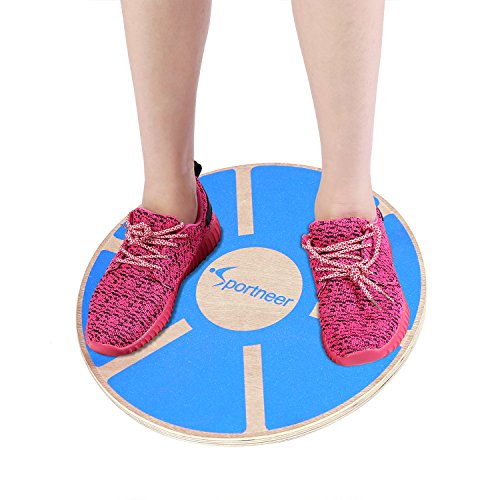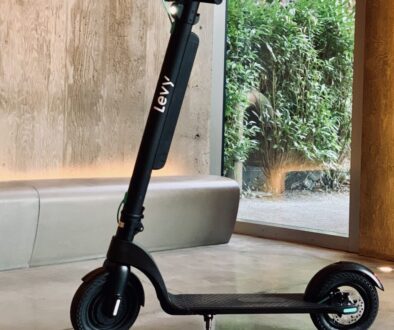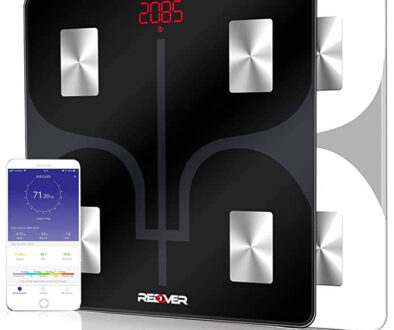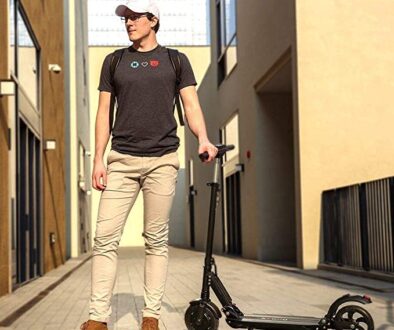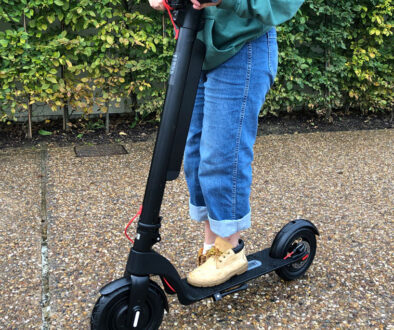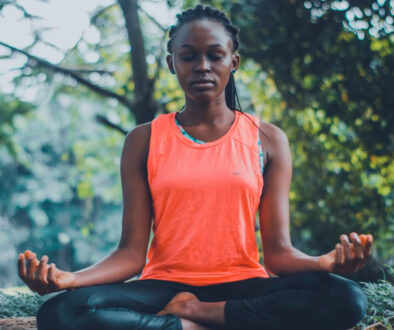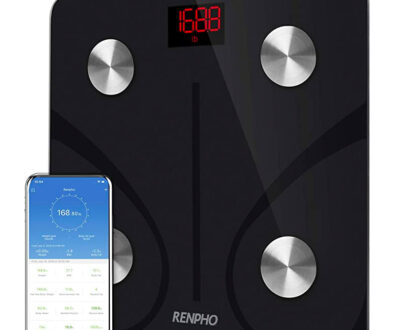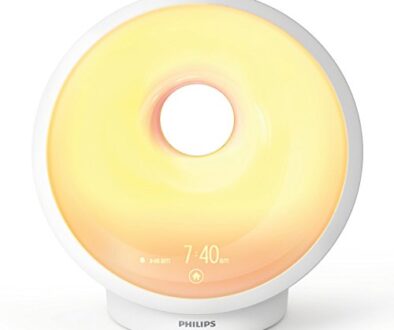Balance Boards Understood – why you need one in your home
What are balance boards? A balance board is a piece of fitness and training equipment – flat on one side, domed or a roller on the other.
When you stand on the flat side you’re immediately engaging lots of different muscles as the domed side wobbles and moves or the roller sends you side to side. If that’s difficult to visualize, just think of a see-saw!

The balance board isn’t a new training aid – you’d imagine that its origins lie in physiotherapy, but that’s not true. A purely recreational tool, it was designed in 1953 by Stanley Washburn Jr and was quickly adopted by sports people of all types – but mainly skiers and surfers – who found that replicating the conditions of their sports off-season was pretty challenging.
It was quickly adopted by all sorts of activity fields where balance is critical to performance – from martial artists to circus performers and ballet dancers. More recently, the balance board has been used in rehabilitation where left and right side motor skills and brain function has been effected and with children suffering from learning difficulties.
Lastly, it has made it’s way into mainstream fitness and if you try one out, you’ll wonder why it has taken so long to gain universal popularity.
If you would like to explore your options online, you can check your options on Amazon.
Who’s a balance board for?
Everyone. Other than your feet, you’ll really struggle to find a piece of fitness equipment that has more universal appeal and impact than a balance board.
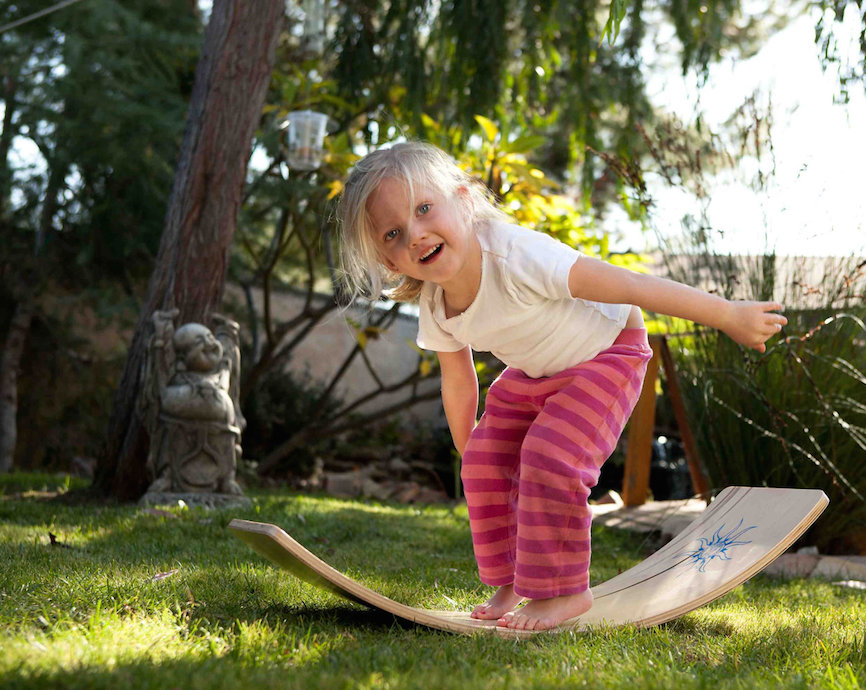
From toddlers taking their first steps to the elderly aiming to retain balance and functional fitness, the balance board really is a catch-all. It’s also very forgiving. The same board can present challenging exercise for the fitness fanatic and gentle stretching for the person recovering from major surgery – it’s a truly versatile bit of kit.
What does it actually do?
Very basically, the balance board forces your body into a state of constant correction. Your ligaments, tendons, muscles and joints are battling to retain a stable position using your brain as the central location that collects all the messages fired and converts them into appropriate action!
The idea is first to balance and maintain stability and then, advance to controlled movements which are dependent on the design of board you favour. There are many different types of boards – wobble, rocker, rocker-roller…. the list goes on. They all focus on training small and stabiliser muscle groups.
The main results of purposeful training with a balance board is improved muscle tone, core stability and overall balance, so you can see why this is particularly suited to those recovering from lower body injuries and the elderly.
As well as tools for surfers and skiers, balance boards can be seen in the homes and gyms of many other professional athletes from football players reliant on quick switch changes to climbers who’s lives depend on acute coordination and mental focus.
Yogis and other functional fitness professional advocate the use of a balance board in improving posture and as a support tool in corrective exercise.
Top tips for using a Balance board
- Start simple – and preferably with someone to lean-on should you lose your balance (especially for the elderly)
- Ensure you have space around you when you’re just starting out, you need to be able to step off easily in the beginning
- There are grades of difficulty with all balance boards – make sure you chose one that suits your ability
- As you grow in confidence, try closing your eyes for added challenge!
- Check out YouTube for lots of exercise programmes for every ability
What are the key fitness benefits of a balance board?
Core stability
This fitness buzz word just isn’t going away, and with good reason. It’s one of the lynchpins to physical longevity and a balance board is excellent at core stability training.
Improved posture and balance
These two go hand in hand but this is particularly relevant for older users. Maintaining good balance as we age is essential for independent living. Being confident under foot is one of the things that many people complain about as they age and using a balance board to perk up your balance brain and muscles is always going to stand you in good stead.
Coordination
Your brain is far more engaged than you’d imagine when using a balance board and this is why balance boards are now being used more and more with patients suffering from challenges that affect their co ordination. That includes children with developmental problems like hypermobility right through to stroke victims.
Lower body strength
When you first step on a balance board you’re definitely going to feel some leg burn! Over time, you’ll get stronger in your lower body but the changes are subtle and you might not notice them at first. Keep at it and the balance board will help you maintain strength and tone without bulking.
What are the key practical benefits of a balance board?
They are good value
Starting under $10, you can get a basic wobble board which will get you on the road and is simple enough for all the family to try out.
Easy to store
Usually weighing less than a few KGs and unlike a rebounder, you can fit a balance board on a shelf, under the bed or tucked away in a cupboard. The styles with independent fulcrum are even easier to tuck away somewhere.
Portable
A rocker will fit to your backpack like a skateboard and a wobble board is not much trickier to take with you. This is one of the many reasons balance boards are a staple piece of kit in a personal trainer’s bag.
One piece of equipment for the whole family – Fun!
There aren’t many households where everyone’s into the same thing – but a balance board is something that everyone can enjoy – either as a serious workout or a bit of family fun – every ability level can enjoy this and reap the benefits of improved balance and core stability.
Types of balance boards
There are a huge number of styles of balance board available but essentially, you’ll find they fall into five types in 2 main categories:
1) The unstable portion (the fulcrum) is either attached or independent of the board
2) The board has 360 degree rotation or only moves longitudinally – one side to the other
These are the 5 categories of board you’ll find, check them out online using the links below:
All these boards offer different challenges but most people begin their balance board training on simple rocker or wobble boards. These boards are relatively inexpensive and are a perfect starting point for any beginner.
Hopefully that’s enough to convince you that every home should have a balance board! With universal appeal and plenty of exercises to suit all abilities and interests, a balance board will continue to evolve as an important part of your fitness routine.

